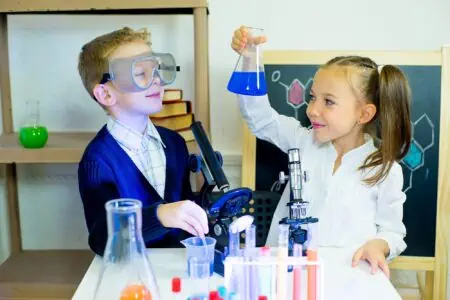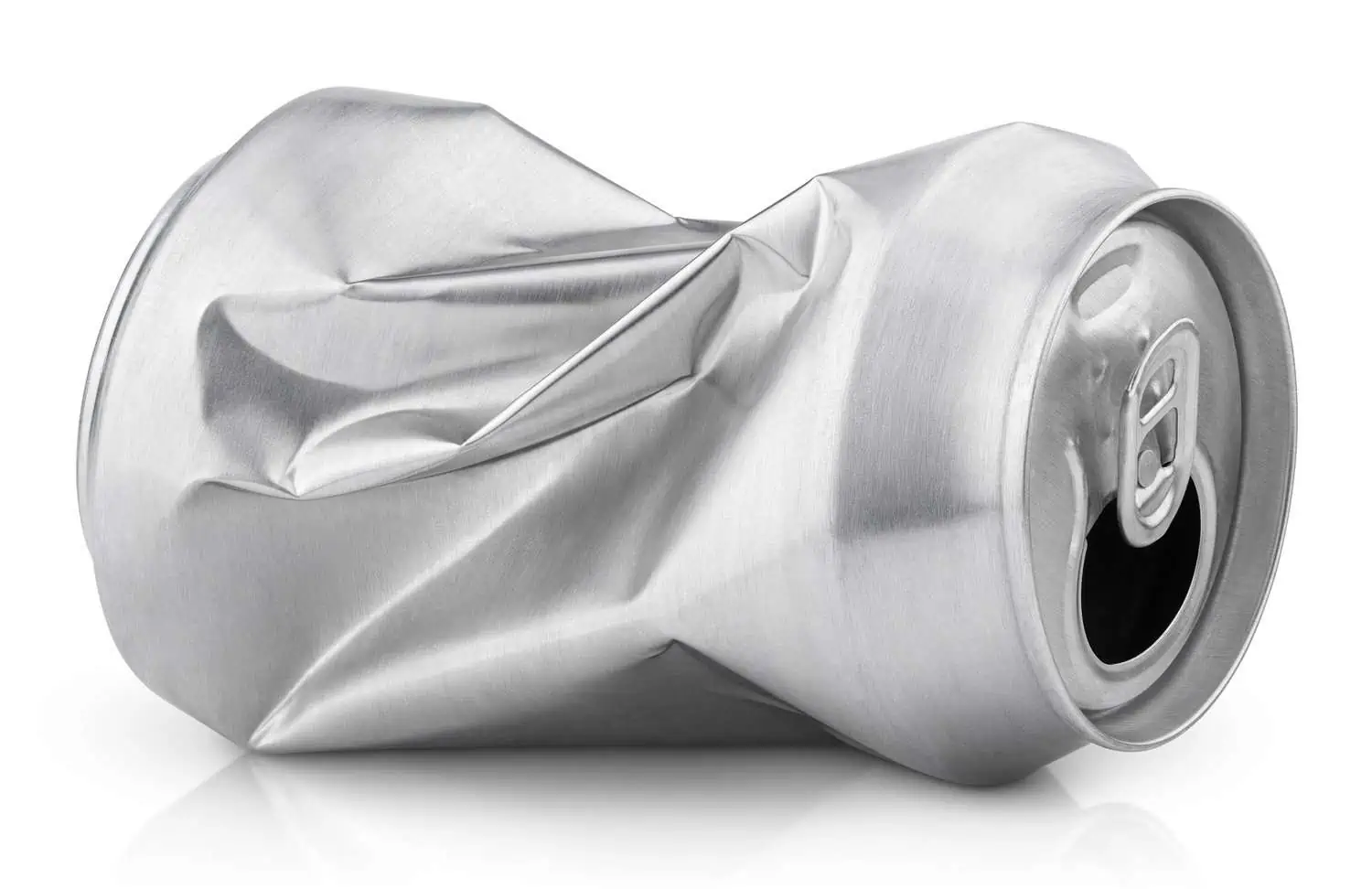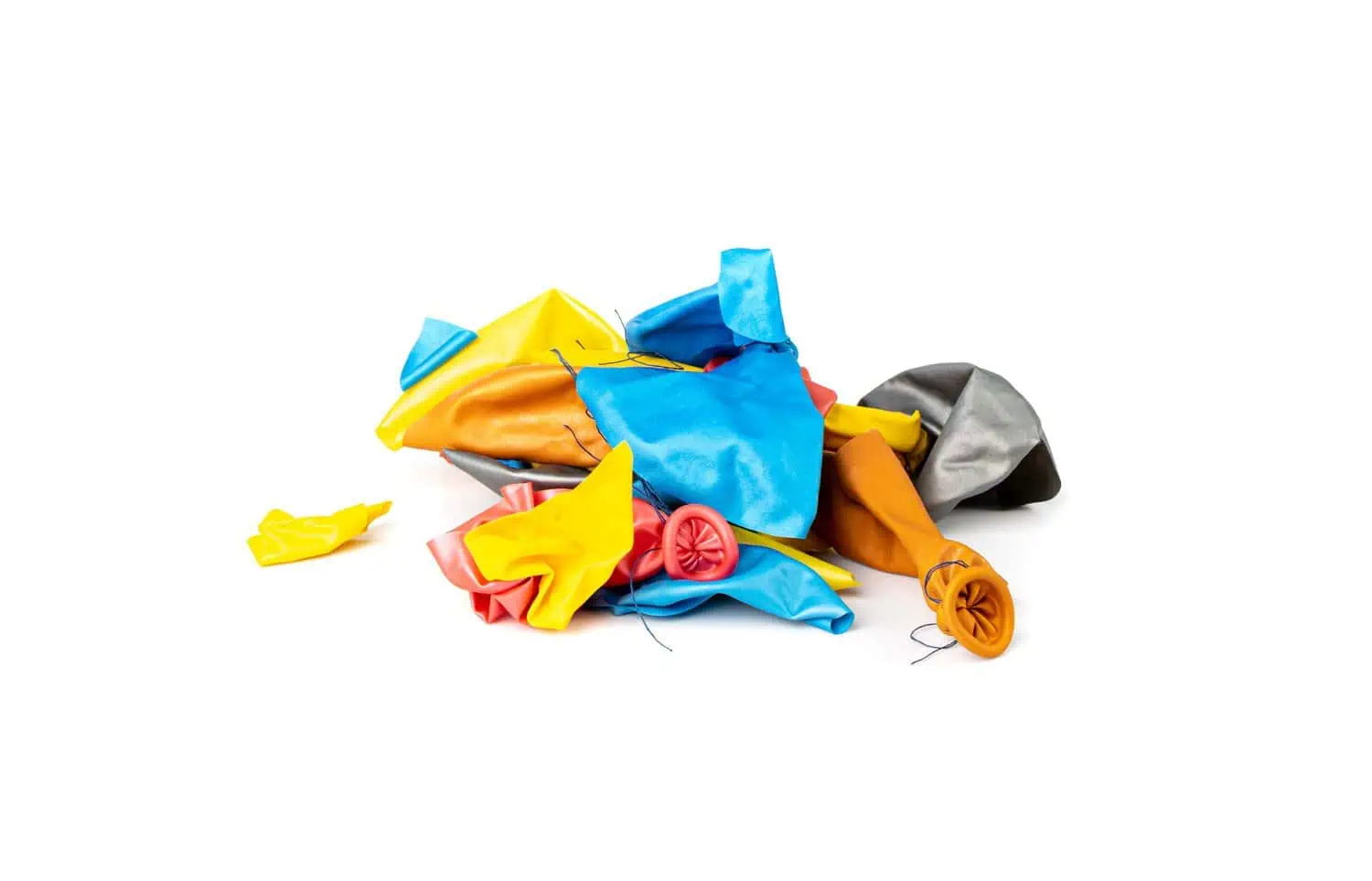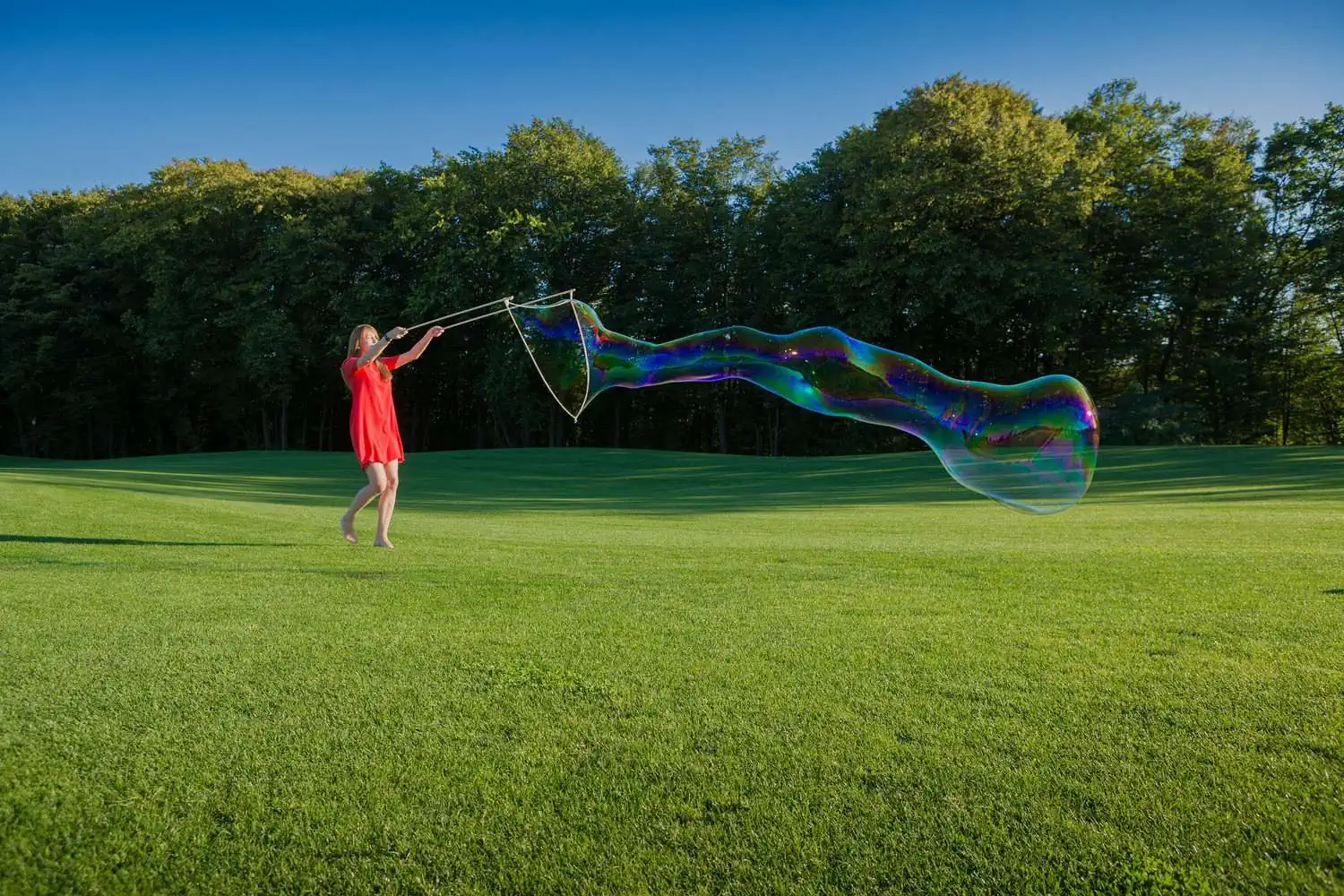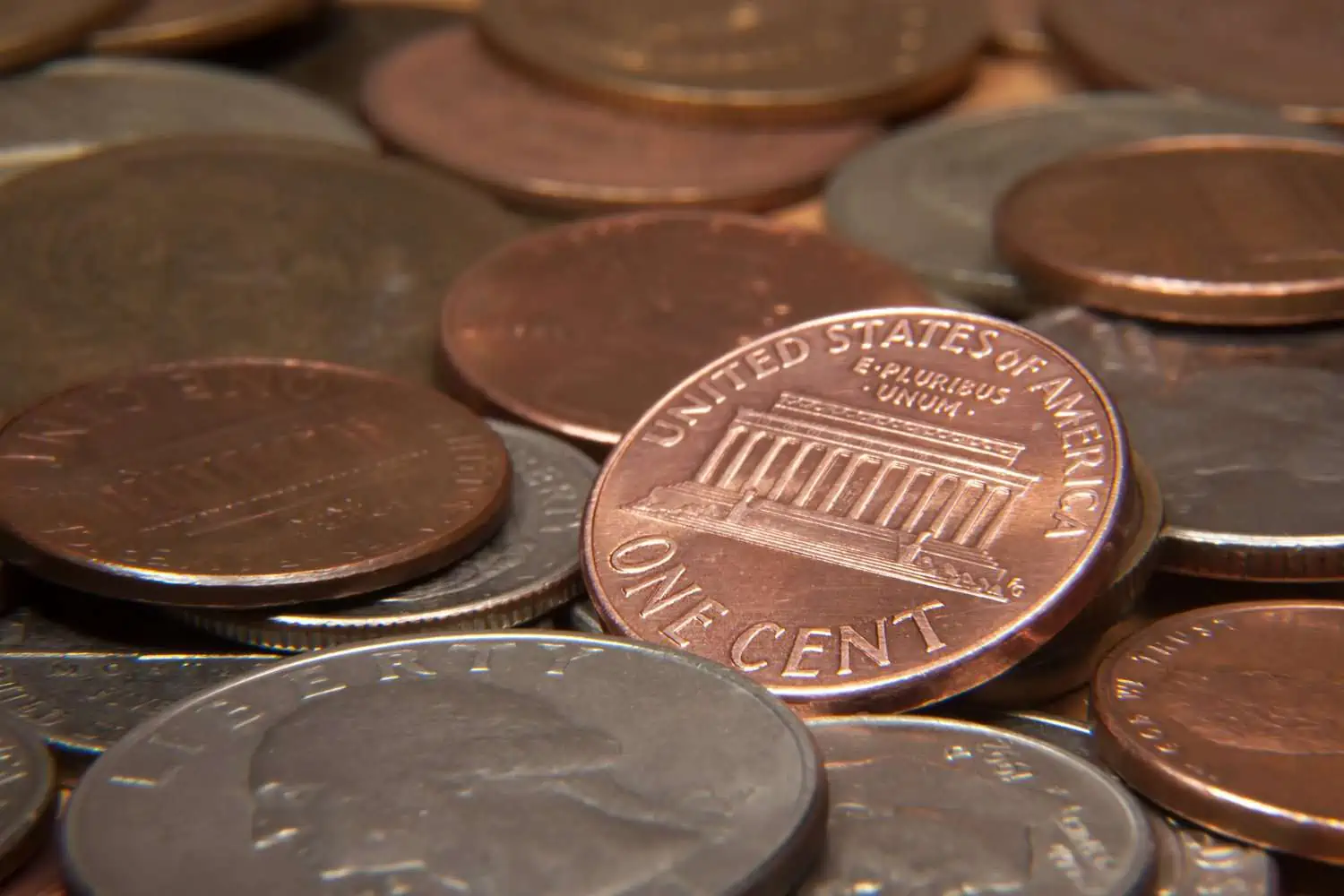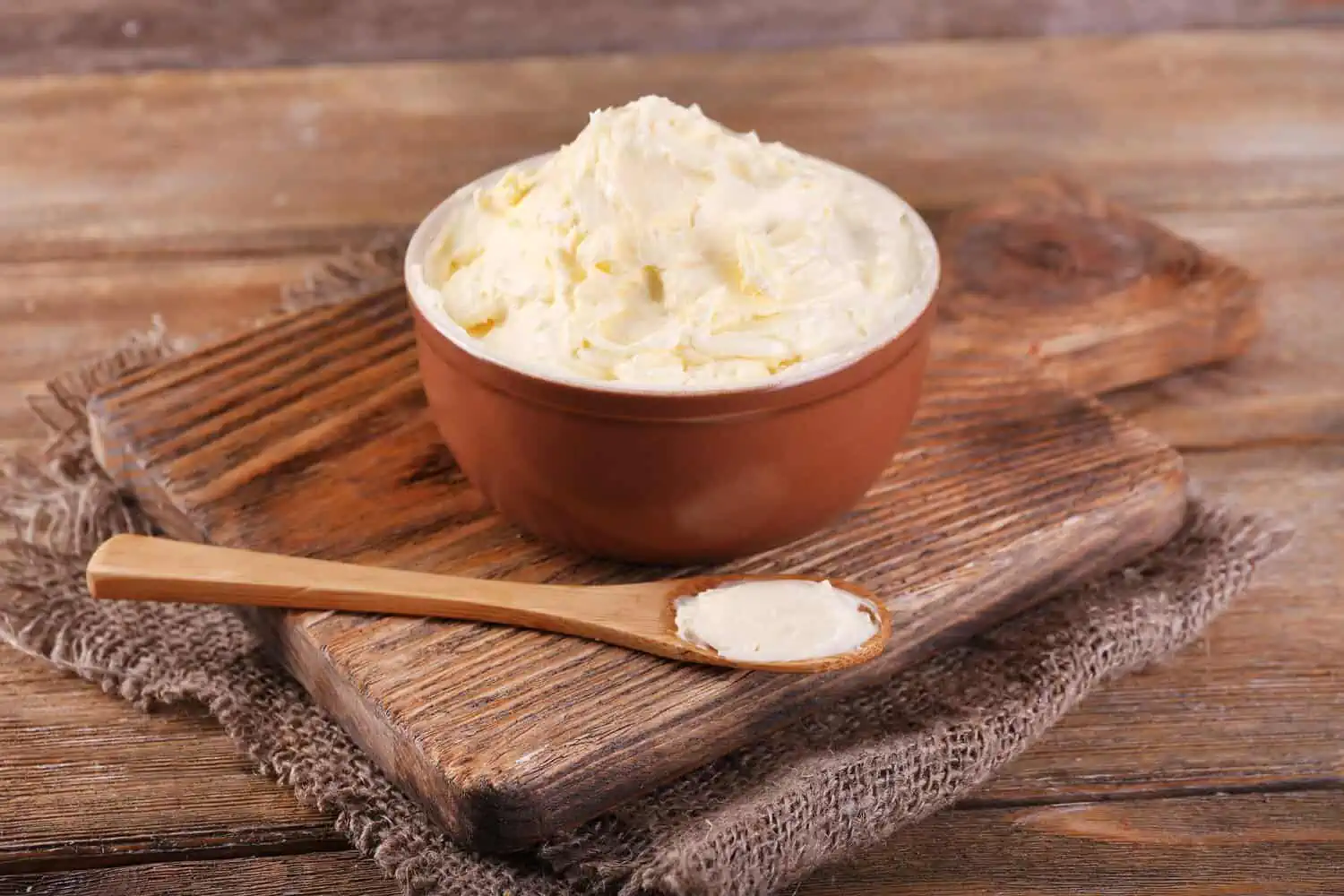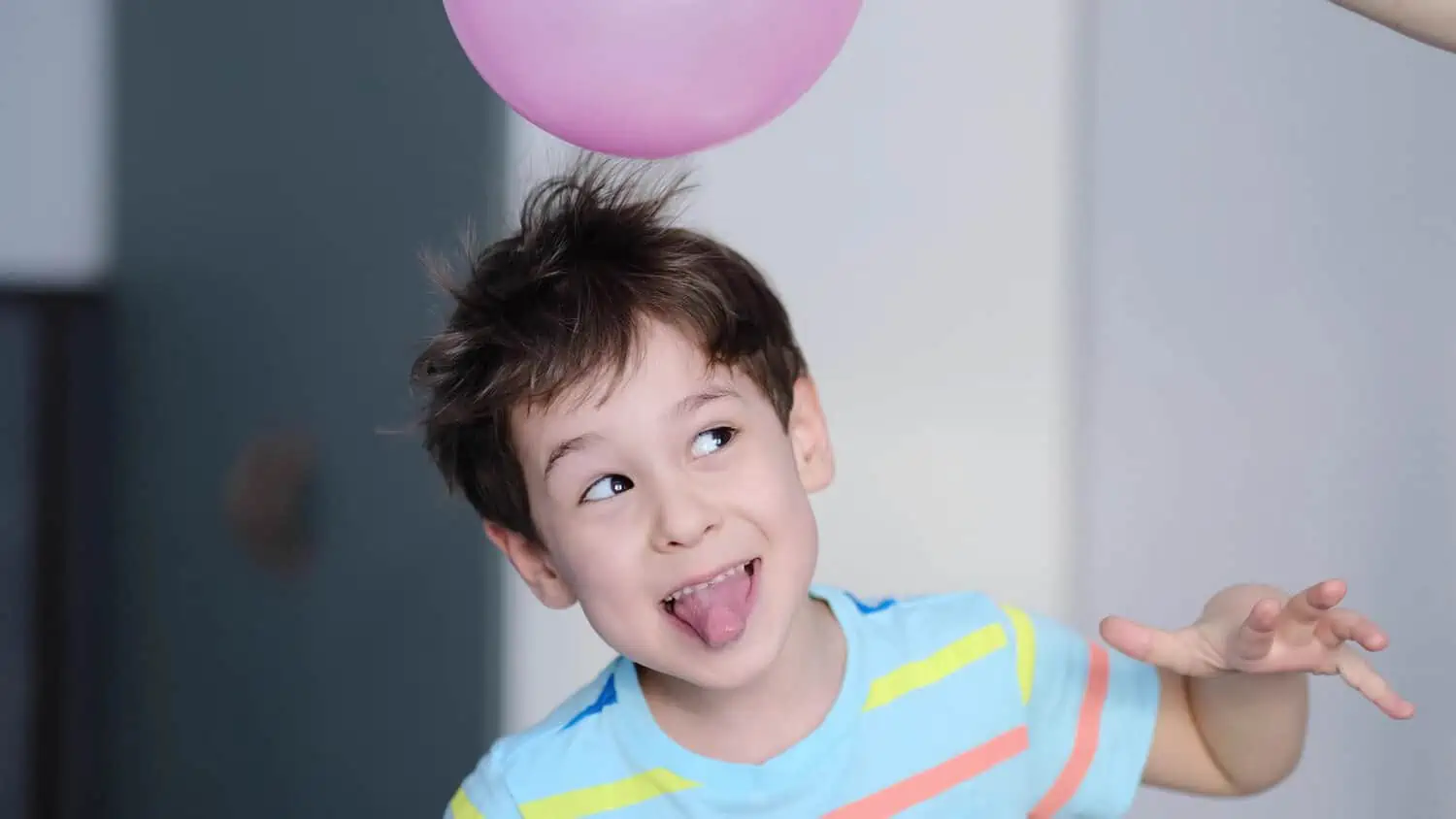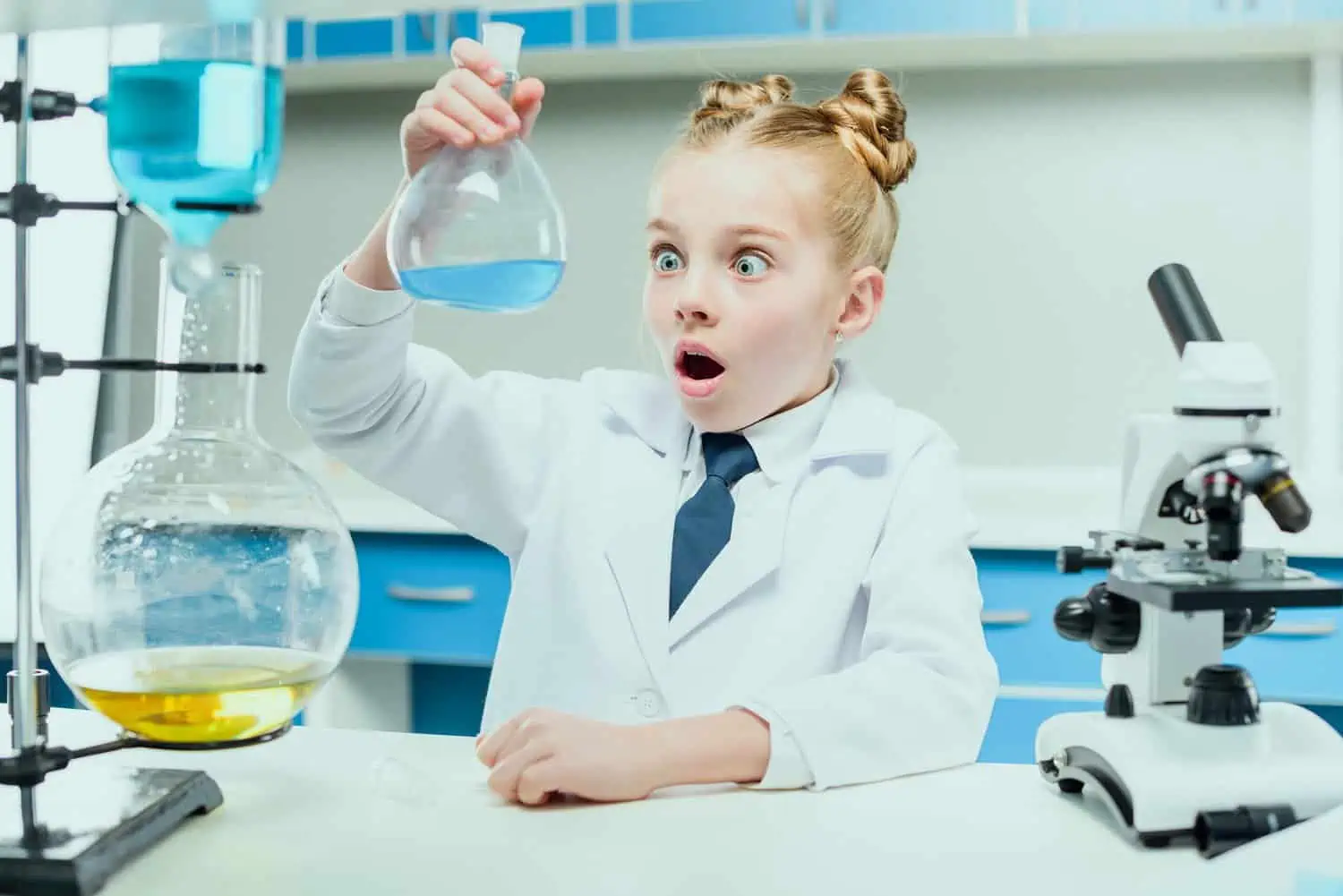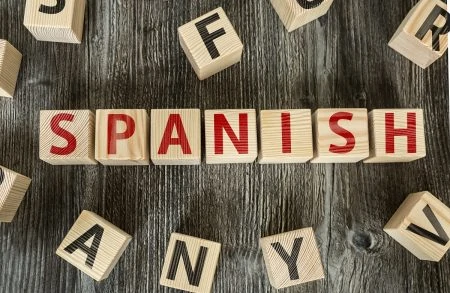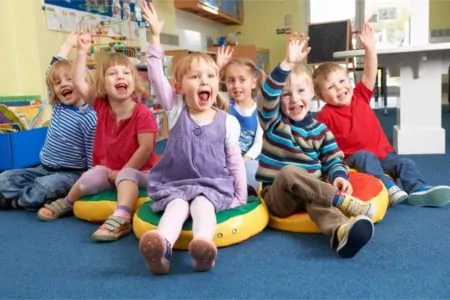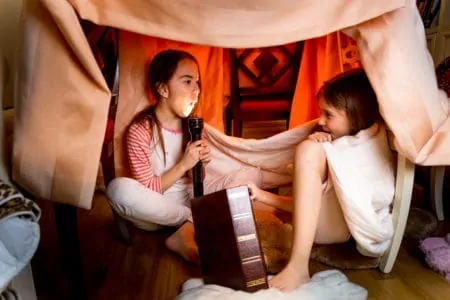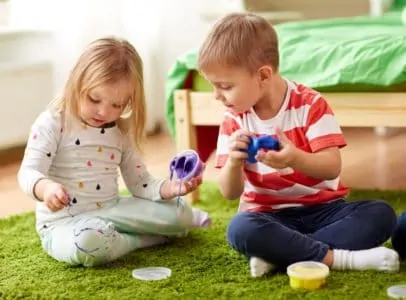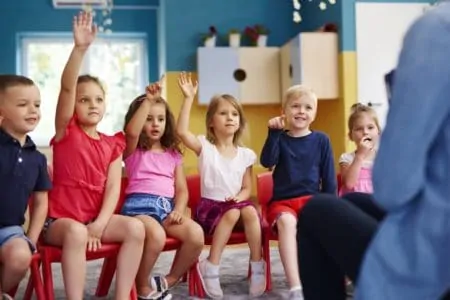Is your kid bored this weekend? Are they glued to the TV again? I have the perfect solution to entertain them and engage their brains: science experiments.
Whether your child loves imploding cans or lemon volcanoes, I’ve put together a list of 65 dazzling science experiments for kids. You don’t need a fancy lab for these, either. You can do them all from the comfort of your kitchen.
Here is exactly how to carry out each experiment. Gone are the days of boredom. Now you have 65 theories to test out.
Easy Science Experiments Kids Will Enjoy
From making a cloud in a bottle to homemade bouncy balls, here are 65 easy science projects for kids. Most use household items, which makes this a cheap way to pass the time.
1. Cloud in a Bottle
Secure the lid tightly on an empty plastic water bottle. Twist the bottom of the bottle as hard as possible. This compresses the air and pushes the molecules inside together.
Open the bottle quickly. The molecules will expand and release pressure to create an instant cloud.
2. Floating Fish
Explore solubility and density with this fun experiment. Draw the outline of a fish on a glass plate using a dry-erase marker.
Wait a few minutes. Slowly pour tap water into the corner of the dish until it covers the bottom. The water will move under the ink. Tilt the plate from side to side and watch the fish float.
3. Lava Lamp
Learn about density while making a groovy lamp. Add two inches of baking soda to a jar. Fill the rest with vegetable oil. These two ingredients will not mix.
Combine 1/4 cup of vinegar with food coloring in a separate cup. Mix them together. Pour the solution into the jar with the oil and baking soda.
Turn off the lights and shine a flashlight on the jar to see the lava flow.
4. Foamy Fountain (Elephant’s Toothpaste)
Kids make foam with household ingredients in this classic project. Scientists call this an exothermic reaction.
Pour 3/4 cup of hydrogen peroxide into a bottle. Add 10 drops of food coloring and one tablespoon of dish soap. Swirl it to mix.
Combine three tablespoons of warm water and one tablespoon of dry yeast in a separate cup. Mix for 30 seconds.
Use a funnel to pour the yeast water into the bottle. Watch it foam fantastically.
Warning
Don’t touch the foam. It contains peroxide, which can irritate skin and eyes.
5. Magic Milk
Pour whole milk into a shallow pie dish. Add a few drops of food coloring to different parts of the milk.
Pour dish soap into a separate bowl. Dip a cotton swab into the soap. Gently touch the surface of the milk with the swab.
The soap lowers the surface tension of the milk. The colors will burst and swim around the plate.
6. Egg in a Bottle
Can you fit an egg in a bottle without breaking it? First, boil and peel an egg. Grab a glass bottle (not plastic) with an opening slightly smaller than the egg.
Ask an adult to light three matches and drop them into the bottle. Place the egg on the opening immediately. The vacuum created by the fire will pull the egg inside.
7. Floating Ping Pong Ball
Levitate a ball using Bernoulli’s Principle. Make a paper funnel using thick cardstock. Ask an adult to cut a small hole in the bottom of the funnel.
Insert a straw into the bottom hole. Secure it with putty or tape.
Place a ping pong ball in the funnel. Put the long end of the straw in your mouth. Blow into the straw. The ball will levitate due to the high speed and low pressure of the air.
8. Imploding Cans
Fill a few empty soda cans with a small amount of water. Fill a large bowl with ice cubes and cold water.
Heat a frying pan on the stove. Stand your cans on the pan until the water inside boils. Use tongs to transfer the hot cans into the ice water immediately.
The temperature change causes the cans to implode instantly.
Warning
Parents should handle the hot cans. This is a spectator sport for the kids.
9. Eggs and Toothpaste
Demonstrate the power of toothpaste. Fill two glasses with soda and two with lemon juice. Cover two eggs in toothpaste. Put one toothpaste egg in soda and one in lemon juice.
Place two regular eggs into the remaining glasses. Leave them for 12 hours.
Rinse the eggs. You will notice the eggs covered in toothpaste are harder than the soft, naked eggs. This shows how fluoride protects enamel.
10. Black Pepper Trick
Teach kids about surface tension. Pour a thin layer of water onto a plate. Sprinkle ground pepper over the surface.
Dip your finger in dish soap. Touch the water in the center of the plate. The pepper will zoom away from your finger as the soap breaks the surface tension.
11. Ice Cream in a Bag
Make science delicious. Pour four ounces of milk and cream, 1/4 teaspoon of vanilla, and two tablespoons of sugar into a zip-top bag. Seal it tightly.
Place that bag into a larger zip-top bag. Fill the large bag with ice and a handful of salt. Zip it shut.
Shake the bags back and forth for five to eight minutes. Open the bag, rinse off the salt, and enjoy your homemade ice cream.
12. Magic Melting Skittles
Line up Skittles around the edge of a plate. Pour warm water onto the plate until it touches the candy.
Watch as the sugar coating dissolves and the colors swirl toward the center. Try different patterns for unique art.
13. Bouncy Egg
Turn a raw egg into a bouncy ball. Place an uncracked raw egg into a glass. Cover it completely with distilled white vinegar. Leave it for 24 hours.
Gently scrape off the remaining shell. You now have a squishy, bouncy egg held together by the membrane.
14. Grow an Avocado Tree
Wash an avocado pit. Insert four toothpicks halfway up the side. Suspend the pit over a jar of water so the bottom third is submerged. Keep the broad side down.
Place the jar in a warm spot. Change the water every few days. Roots will appear in a few weeks.
Plant the pit in soil once the stem reaches six inches.
15. Make Slime
Mix 1/4 cup of water and 1/4 cup of white school glue in a bowl. Add food coloring.
In a separate bowl, combine 1/2 tablespoon of Borax and 1/2 cup of water. Stir well.
Add the Borax solution to the glue mixture. Knead it until it becomes slime.
16. DIY Rock Candy
Combine one part water and three parts sugar in a saucepan. Boil the mixture.
Let it cool for 10 minutes. Pour it into a jar. Add food coloring if desired.
Dampen a wooden skewer and roll it in sugar. Place the skewer into the jar. Secure it with a clothespin so it hangs in the middle without touching the sides.
Wait five days for crystals to form.
Get Help
Ask an adult for help with the boiling sugar solution.
17. Baking Soda and Vinegar Balloon
Inflate a balloon using chemistry. Pour 1/4 cup of vinegar into a plastic bottle.
Funnel one tablespoon of baking soda into a balloon. Stretch the balloon mouth over the bottle opening.
Lift the balloon to dump the baking soda into the vinegar. The resulting carbon dioxide gas will blow up the balloon.
18. Frozen Bubbles
Go outside when the temperature is below freezing. Blow bubbles with a standard wand.
The bubbles will freeze in mid-air or when they land. You can also blow a bubble onto a cold plate to watch ice crystals form on the surface.
19. DIY Phone Speaker
Amplify sound with cardboard. Cut a slot in a toilet paper roll big enough for your phone.
Cut holes in two plastic cups to fit the ends of the roll. Assemble the pieces.
Place your phone in the slot and play music. The cups direct the sound waves to make them louder.
20. Invisible Ink
Mix 1/3 cup baking soda and 1/3 cup water. Dip a cotton swab in the mix and write a message on paper. Let it dry.
Paint over the paper with grape juice. The acid in the juice reacts with the base in the baking soda to reveal the message.
21. Milk Bottle Xylophone
Line up six glass bottles. Fill them with varying amounts of water.
Tap each bottle with a metal spoon. The water level changes the vibration speed to create different musical pitches.
22. Dancing Raisins
Fill one glass with clear soda and another with water. Drop raisins into both.
The raisins in the soda will dance. Carbon dioxide bubbles attach to the rough surface of the raisins and lift them up. When the bubbles pop at the surface, the raisins sink again.
23. Exploding Lunch Bag
Fill a zip-top bag with 1/4 cup warm water and 1/2 cup vinegar.
Place three teaspoons of baking soda in the center of a tissue. Fold the tissue into a small packet.
Drop the packet into the bag and zip it quickly. Step back. The bag will expand and pop.
Top Tip
Do this outside to avoid a messy kitchen.
24. Lemon Volcano
Cut the top and bottom off a lemon. Mosh the insides with a spoon. Add food coloring.
Pour in baking soda. Poke the inside with a knife to mix. The lemon acid reacts with the soda to erupt.
25. Walking Water Rainbow
Line up seven cups. Fill every second cup with water.
Add red dye to cups 1 and 7. Add yellow to cup 3. Add blue to cup 5.
Fold paper towel strips to connect the cups. Place one end in a full cup and the other in an empty cup.
The water travels up the towels via capillary action. It mixes in the empty cups to create a full rainbow.
26. Rising Water
Fill a shallow bowl with water and food coloring. Place a lit tealight candle in the center.
Cover the candle with a glass. As the flame uses oxygen and the air cools, the water rises into the glass.
Warning
An adult must handle the lighter and candle.
27. Bend Water
Turn on a faucet to a very thin stream. Rub a balloon on your hair to create static electricity.
Hold the balloon near the water. The negative charge attracts the positive charge in the water, which makes the stream bend.
28. Citrus Pops Balloons
Limonene is a chemical in citrus peels that dissolves rubber (1).
Inflate a balloon. Cut a thick piece of orange peel. Squeeze the peel near the balloon so the oil sprays onto the rubber. The balloon will pop instantly.
Something To Note
This works best on regular latex balloons, not vulcanized rubber.
29. DIY Compass
Stroke a magnet down the length of a sewing needle 50 times. Repeat on the other side.
Push the needle through a small slice of cork. Float the cork in a bowl of water. The needle will align itself to point North.
30. Sink or Float
Fill a tub with water. Gather household items like keys, apples, and toys.
Ask your child to guess which ones will sink and which will float. Test them out to learn about density.
31. Optical Illusions
Trick the brain using the eyes. Buy a book of optical illusions or print some patterns from the web. It is a quiet way to explore perception.
32. Pumpkin Volcano
Clean out a small pumpkin. Pour 1/4 cup of baking soda inside. Add a squirt of dish soap.
Pour in vinegar and watch the foam erupt from the top.
33. Create a Marshmallow Catapult
Stack six popsicle sticks and band them together. Band a spoon to a single stick.
Slide the stack between the spoon and the single stick. Secure the intersection with a rubber band.
Place a marshmallow on the spoon, pull back, and fire.
34. Make Ginormous Bubbles
Mix six cups of distilled water with 1/2 cup of cornstarch. Add one tablespoon of baking powder, one tablespoon of glycerine, and 1/2 cup of Blue Dawn dish soap.
Use a giant wand made of string and sticks to create massive bubbles.
35. Magnet Experiment
Fill a glass with water and magnetic iron filings.
Run a magnet up the side of the glass. The filings will follow the magnetic field to create cool spikes and shapes.
36. Paper Bridge
Place two cups a few inches apart. Use a piece of paper to build a bridge between them.
Stack pennies on the bridge to test its strength. Try folding the paper into accordion shapes or tubes to see which design holds the most weight.
37. Shine Up Pennies
Fill cups with various liquids: vinegar, soapy water, ketchup, and soda. Drop a dirty penny in each.
Wait 10 minutes. Rinse the pennies. The acidic liquids (like vinegar and ketchup) will clean the copper oxide off the best.
38. Egg Drop Challenge
Fill a large glass with water. Place a tray on top. Stand a toilet paper tube vertically on the tray. Balance a raw egg on the tube.
Smack the tray horizontally with your hand. The tray and tube will fly away, but inertia will keep the egg still for a moment before it drops safely into the water.
39. Green Pennies
Mix 1/4 cup vinegar and a teaspoon of salt in a bowl. Soak pennies for 10 minutes.
Remove the pennies and let them dry on a paper towel without rinsing. They will turn green. This is called a patina, which is a reaction between the copper, oxygen, and chlorine in the salt.
40. Homemade Butter
Pour heavy cream into a jar. Screw the lid on tight. Shake it vigorously.
After about 20 minutes, you will hear a thud. The fat has separated from the liquid buttermilk. Pour off the liquid and spread your fresh butter on toast.
41. Neon Flowers
Fill glasses with water and lots of food coloring. Place white carnations or daisies in the water.
Wait 24 hours. The petals will change color as the stems pull the dyed water up to the flower.
42. Expanding Soap
Cut a bar of Ivory soap into quarters. Place a piece on a plate in the microwave.
Cook it for two minutes. Air pockets in the soap expand rapidly to create a massive, fluffy cloud.
43. Sticky Ice
Put ice cubes in a bowl of water. Lay a string across an ice cube. Sprinkle salt over the string.
Wait a minute. Lift the string. The ice cube will stick to it. The salt melts the ice slightly, but the water refreezes quickly to trap the string.
44. Density Jar
Pour liquids carefully into a tall glass in this order: honey, corn syrup, dish soap, water, vegetable oil, and rubbing alcohol.
The liquids will settle into distinct layers based on their density.
45. Soap Boat
Cut a small boat shape from cardstock. Float it in a tray of water.
Dip a toothpick in dish soap and touch the water at the back of the boat. The boat will zoom forward as the soap reduces surface tension behind it.
46. Dancing Sprinkles
Stretch plastic wrap tightly over a bowl. secure it with a rubber band. Place sprinkles on top.
Hum loudly or hold a speaker near the bowl. The sound waves vibrate the plastic and make the sprinkles dance.
47. Eggs and Salt Water
Fill a glass with fresh water and drop an egg in. It sinks.
Fill another glass with strong salt water. Drop an egg in. It floats.
Fill a third glass half with salt water and half with fresh water (poured gently on top). The egg will float in the middle, resting on the dense salt water layer.
48. Leakproof Bag
Fill a zip-top bag with water and seal it. Sharpen several pencils.
Stab the pencils quickly through the bag. Surprisingly, no water leaks out because the plastic polymer seals around the pencil wood.
50. Frozen Baking Soda
Mix baking soda, water, and food coloring. Hide small toys in the mush and freeze it in a tray.
Give the kids vinegar to pour over the frozen blocks. The ice will fizz and melt to reveal the treasures.
51. Leaf Breathing
Fill a bowl with warm water. Place a fresh leaf inside and weigh it down with a rock.
Check back in a few hours. You will see bubbles on the leaf surface. This is oxygen being released, proving that plants breathe.
52. Exploding Colors
Fill a baking tray with baking soda. Fill an ice cube tray with vinegar and different food colorings.
Use a dropper to squirt colored vinegar onto the baking soda. It creates fizzy, colorful art.
53. Floating Paperclip
Bend a paperclip into an “L” shape. Balance a second paperclip on the flat part.
Lower the L-clip into a bowl of water slowly. The second clip will float on the surface tension.
54. Viscosity Experiment
Fill glasses with water, oil, and honey. Drop a marble into each at the same time.
The marble moves slower in the honey. This demonstrates viscosity, or resistance to flow.
55. Plastic Milk
Heat one cup of milk. Add four teaspoons of vinegar and stir. The milk will separate into curds and whey.
Strain the liquid. Knead the remaining curds. You have created a natural plastic called casein, which dries hard.
Stay Safe
The milk gets hot, so supervise this step closely.
56. Oxidation With Apples
Pour water, vinegar, lemon juice, and milk into separate cups. Place an apple slice in each. Leave one slice on a plate with nothing.
Wait 30 minutes. The plain apple will turn brown (oxidation). The ones in acidic liquids like lemon juice will stay fresh.
57. Sunscreen Science
Fold a piece of dark construction paper in half. Paint sunscreen on one side.
Leave the paper in direct sun for a few hours. The unprotected side will fade, but the sunscreen side will keep its color. This visually proves why we wear SPF.
58. Static Electricity Hair
Rub a balloon on a sweater or towel. Hold it near your head. Your hair will stand up and reach for the balloon due to static attraction.
59. Chicken in a Cup
Poke a hole in the bottom of a plastic cup. Tie a string to a paperclip and thread it so the clip stays inside the cup.
Wet a paper towel. Grip the string with the wet towel and pull down in short jerks. The vibrations resonate in the cup to sound like a chicken.
60. Gummy Bear Osmosis
Place gummy bears in cups of water, salt water, and vinegar. Wait 24 hours.
The bear in fresh water will grow huge due to osmosis. The salt water bear will shrink.
Top Tip
Measure the bears before and after for real data.
61. Make a Sundial
Place a stick in the ground. Mark the shadow tip with a stone every hour.
The next day, you can tell the time by looking at where the shadow falls on your stones.
62. Homemade Bouncy Balls
Mix 1/2 teaspoon Borax with two tablespoons warm water.
In a separate bowl, mix one tablespoon glue and one tablespoon cornstarch.
Pour the Borax mix into the glue. Stir, then roll it into a ball with your hands. It will bounce once it solidifies.
63. Instant Ice
Freeze a bottle of purified water for exactly two hours. Carefully take it out.
Pour the water onto an ice cube. It will freeze instantly into a slushy pillar.
64. Mystery Smell
Put items like vanilla, lemon, or cinnamon in opaque cups. Blindfold the kids and have them guess the scent. It isolates the sense of smell from sight.
65. What Dissolves in Water?
Set up cups with flour, sugar, oil, and sand. Add warm water and stir.
Chart which items disappear (dissolve) and which ones stay separate.
Safety Tips For Home Science
Safety comes first, even in the kitchen. Here is how to keep your little scientists safe.
- Supervise closely: Never leave children alone with chemicals or heat. Stay focused on the activity.
- Gear up: Wear old clothes or an oversized shirt. Goggles are a great addition to protect eyes from splashes.
- Follow the recipe: Stick to the instructions. Mixing random household cleaners can create dangerous fumes.
- Ventilate: Open a window or run a fan if you are using vinegar or other smelly ingredients.
- Clean up: Wash hands thoroughly after every experiment.
